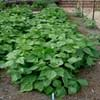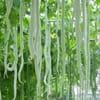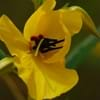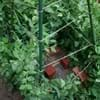Life Span
Annual
Perennial
Type
Vegetable
Tender Perennial
Origin
Central America, South America
Mediterranean
Types
Bush Beans, Pole Beans
Blue Anemone, Greek Windflower, Carolina Anemone, Chinese Anemone
Habitat
Cultivated Beds
Wild
USDA Hardiness Zone
Not Available
8-12
AHS Heat Zone
Not Available
12-5
Sunset Zone
A1, A2, A3, H1, H2, 1a, 1b, 2a, 2b, 3a, 3b, 4, 5, 6, 7, 8, 9, 10, 11, 12, 13, 14, 15, 16, 17, 18, 19, 20, 21, 22, 23, 24
4, 5, 6, 7, 8, 9, 10, 11, 12, 13, 14, 15, 16, 17, 18, 19, 20, 21, 22, 23, 24
Habit
Vining/Climbing
Clump-Forming
Minimum Height
Not Available
Minimum Width
Not Available
Flower Color
Lavender
Sky Blue
Flower Color Modifier
Bicolor
Not Available
Fruit Color
Purple
Not Available
Leaf Color in Spring
Green, Purple
Green
Leaf Color in Summer
Green
Yellow, Green
Leaf Color in Fall
Green
Not Available
Leaf Color in Winter
Not Available
Not Available
Plant Season
Spring, Summer, Fall
Spring
Sunlight
Full Sun
Partial Sun, Partial shade
Type of Soil
Loam, Sand
Loam
The pH of Soil
Neutral, Alkaline
Acidic, Neutral
Soil Drainage
Well drained
Average
Bloom Time
Indeterminate
Early Spring, Spring, Late Spring, Early Summer
Where to Plant?
Container, Ground, Pot
Ground, Pot
How to Plant?
Seedlings
Seedlings
Plant Maintenance
Medium
Medium
Watering Requirements
Do Not over Water, Requires regular watering, Water evenly
Medium, Prefer drip-irrigation instead of Over-head watering, Use Mulches to help prevent water loss during hot and windy weather, Water Deeply
In Summer
Lots of watering
Lots of watering
In Spring
Moderate
Moderate
In Winter
Average Water
Average Water
Soil pH
Neutral, Alkaline
Acidic, Neutral
Soil Type
Loam, Sand
Loam
Soil Drainage Capacity
Well drained
Average
Sun Exposure
Full Sun
Partial Sun, Partial shade
Pruning
Remove damaged leaves, Remove dead branches, Remove dead leaves
Prune prior to new growth, Remove dead or diseased plant parts, Remove deadheads
Fertilizers
5-10-10 fertilizer
All-Purpose Liquid Fertilizer
Pests and Diseases
Alternaria Leaf Spot, Anthracnose, Aphids, Armyworm, Bacterial Blight
Botrytis collar rot, Crown gall, Cucumber mosaic, Downy mildew, Impatiens necrotic spot, Leaf curl, Phytophthora, Rhizoctonia crown rot, Root rot, Rust, Sclerotinia blight, Southern blight
Plant Tolerance
Drought
Drought
Flower Petal Number
Single
Single
Foliage Texture
Coarse
Fine
Foliage Sheen
Matte
Matte
Attracts
Not Available
Not Available
Allergy
no allergic reactions
Skin irritation
Aesthetic Uses
Not Used For Aesthetic Purpose
Not Used For Aesthetic Purpose
Beauty Benefits
Beautiful Skin
Not Available
Environmental Uses
Fixes Nitrogen
Air purification
Medicinal Uses
Cancer, Diuretic, Homeopathy, Hypotensive, Miscellany
Asthma, Cough, Gout, Menstrual Disorders, Stomach pain
Part of Plant Used
Leaves, Seedpod, Seeds
Flowers, Leaves
Other Uses
Used for making brown dye, Used in biomass, Used in in reviving woollen fabrics
Not Available
Used As Indoor Plant
Yes
No
Used As Outdoor Plant
Yes
Yes
Garden Design
Container, Edible, Herb, Vegetable, Vine
Bedding Plant, Container, Mixed Border, Rock Garden / Wall, Wildflower
Botanical Name
PHASEOLUS vulgaris 'Purple King'
ANEMONE 'Harmony Blue'( HARMONY SERIES)
Common Name
String bean, Field bean, French bean
Anemone, Harmony Blue Anemone
In Hindi
String Bean
रत्नज्योति
In French
Haricot vert
Anémone
In Spanish
String Bean
Anémona
In Greek
Αμπελοφάσουλο
ανεμώνη
In Portuguese
Feijão de corda
Relutantemente
In Polish
Fasolka szparagowa
Zawilec
In Latin
Gloria Bean
VivoSocial
Phylum
Magnoliophyta
Magnoliophyta
Class
Magnoliopsida
Magnoliopsida
Order
Fabales
Ranunculales
Family
Fabaceae
Ranunculaceae
Clade
Angiosperms, Eudicots, Rosids
Not Available
Tribe
Phaseoleae
Not Available
Subfamily
Faboideae
Not Available
Number of Species
Not Available
Season and Care of String Bean and Anemone
Season and care of String Bean and Anemone is important to know. While considering everything about String Bean and Anemone Care, growing season is an essential factor. String Bean season is Spring, Summer and Fall and Anemone season is Spring, Summer and Fall. The type of soil for String Bean is Loam, Sand and for Anemone is Loam while the PH of soil for String Bean is Neutral, Alkaline and for Anemone is Acidic, Neutral.
String Bean and Anemone Physical Information
String Bean and Anemone physical information is very important for comparison. String Bean height is 210.00 cm and width 60.00 cm whereas Anemone height is Not Available and width Not Available. The color specification of String Bean and Anemone are as follows:
String Bean flower color: Lavender
String Bean leaf color: Green and Purple
Anemone flower color: Sky Blue
- Anemone leaf color: Green
Care of String Bean and Anemone
Care of String Bean and Anemone include pruning, fertilizers, watering etc. String Bean pruning is done Remove damaged leaves, Remove dead branches and Remove dead leaves and Anemone pruning is done Prune prior to new growth, Remove dead or diseased plant parts and Remove deadheads. In summer String Bean needs Lots of watering and in winter, it needs Average Water. Whereas, in summer Anemone needs Lots of watering and in winter, it needs Average Water.





